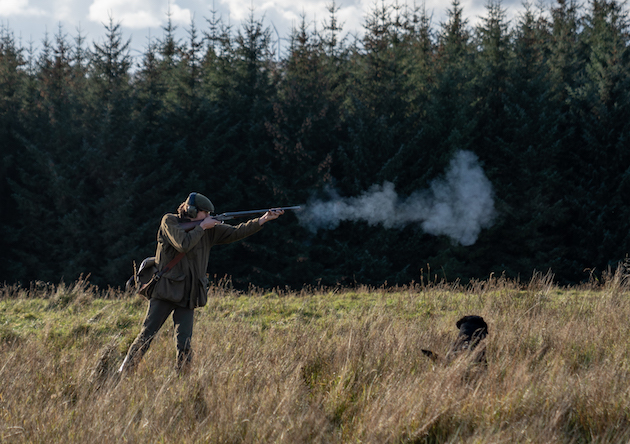How to prepare and cook snipe
If your gamebag includes a snipe, this is the classic way in which to eat it.
Win CENS ProFlex DX5 earplugs worth £1,149 – enter here
I had never come up against walked-up snipe until I took a shooting holiday to Ireland in December.
 Jack takes a shot at a snipe that hugo as flushed from the cover
Jack takes a shot at a snipe that hugo as flushed from the cover
A: With the possible exception of ZZ (helice) targets that fly erratically after leaving the trap, at the time of writing no clay bird has been invented that behaves in the same way as a snipe flushed off boggy ground by a dog.
The only useful ‘practice’ you can do is to shoot these little birds as often as you can – there’s a definite knack to knocking them down on a reasonably consistent basis.
As you discovered, this little bird zig-zags away as soon as it takes to the wing and it’s impossible to track it with the muzzles in the usual way.
Most shooters can be forgiven for trying to let off a shot as soon as possible – usually trying to judge whether the bird’s going to zig, or zag, when they pull the trigger.
Sometimes they ‘guess’ correctly and the bird and shot pattern converge at the same time. But this doesn’t happen very often.
What usually happens (although it is not always) is that snipe zig-zag two or three times and then take a straighter, rising, flightpath once they reach full speed. So it’s worth ‘holding fire’ for a few seconds. Watch the bird over the muzzles and mount the gun when it stops jinking. The bird will still be in range when it does this.
If your gamebag includes a snipe, this is the classic way in which to eat it.
Growing up in Surrey, snipe were rarely on my horizon. The heaths are mostly too dry for them and the…
Craigenputtock House has been sitting in the rural splendour of upland Dumfriesshire since the 11th century. Once the home of…
Other than advising you to ‘hold fire’ the only other advice I can give is to use cartridges loaded with small shot – 8s are perfect.
Snipe are small birds and can escape through the gaps in a pattern of big shot. Number 8s, on the other hand, fill the pattern nicely and carry enough energy to kill cleanly at range.
I hope the above advice makes something of a difference. It’s definitely worth a go next time you are out in the field.
Get the latest news delivered direct to your door
Discover the ultimate companion for field sports enthusiasts with Shooting Times & Country Magazine, the UK’s leading weekly publication that has been at the forefront of shooting culture since 1882. Subscribers gain access to expert tips, comprehensive gear reviews, seasonal advice and a vibrant community of like-minded shooters.
Save on shop price when you subscribe with weekly issues featuring in-depth articles on gundog training, exclusive member offers and access to the digital back issue library. A Shooting Times & Country subscription is more than a magazine, don’t just read about the countryside; immerse yourself in its most authoritative and engaging publication.

